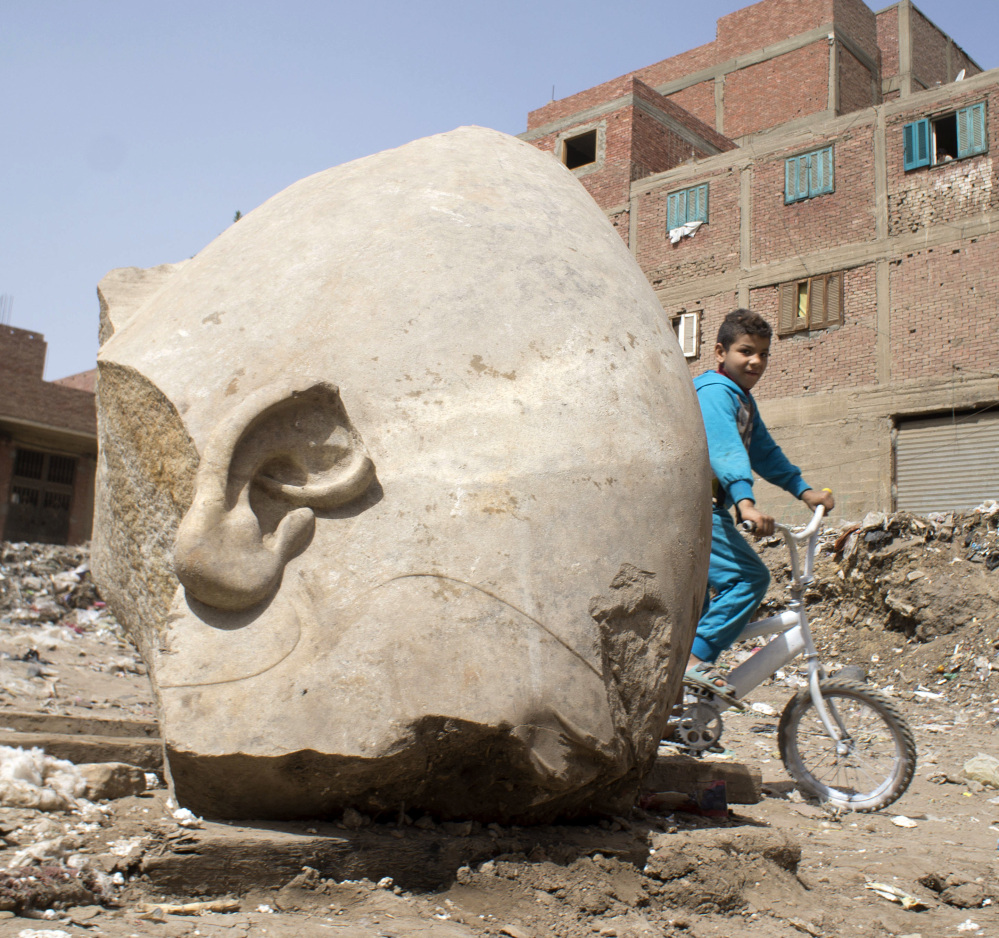CAIRO — Archaeologists in Egypt discovered a massive statue in a Cairo slum that may be of Ramses II, one of the country’s most famous and longest ruling ancient pharaohs.
The colossus, a large portion of whose head was pulled from mud and groundwater by a bulldozer, is around 26 feet high and was discovered by a German-Egyptian archaeological team.
“We used the bulldozer to lift it out. We took some precautions, although somewhat primitive, but the part that we retrieved was not harmed,” said Khaled Mohamed Abuelela, manager of antiquities at Ain Shams University.
Egyptologist Khaled Nabil Osman said the statue was an “impressive find” and the area in the working class neighborhood of Matariya in eastern Cairo is likely full of other buried antiquities.
“It was the main cultural place of ancient Egypt, even the Bible mentions it,” he said.
“The sad news is that the whole area needs to be cleaned up, the sewers and market should be moved,” he said.
Ramses II, who took the throne in his early 20s as the third pharaoh of the 19th Dynasty, ruled Egypt more than 3,000 years ago. He is credited with expanding ancient Egypt’s reach as far as modern Syria to the east and modern Sudan to the south.
The expansion earned him the title “Ramses the Great.”
Ramses II ruled Egypt for 60 years – one of the longest stretches in ancient Egypt – and besides his military exploits is known for being a great builder whose image can be seen at a string of sites across the country. Massive statues of the warrior-king can be viewed in Luxor, and his most famous monument is in Abu Simbel, near Sudan.
Send questions/comments to the editors.



Success. Please wait for the page to reload. If the page does not reload within 5 seconds, please refresh the page.
Enter your email and password to access comments.
Hi, to comment on stories you must . This profile is in addition to your subscription and website login.
Already have a commenting profile? .
Invalid username/password.
Please check your email to confirm and complete your registration.
Only subscribers are eligible to post comments. Please subscribe or login first for digital access. Here’s why.
Use the form below to reset your password. When you've submitted your account email, we will send an email with a reset code.